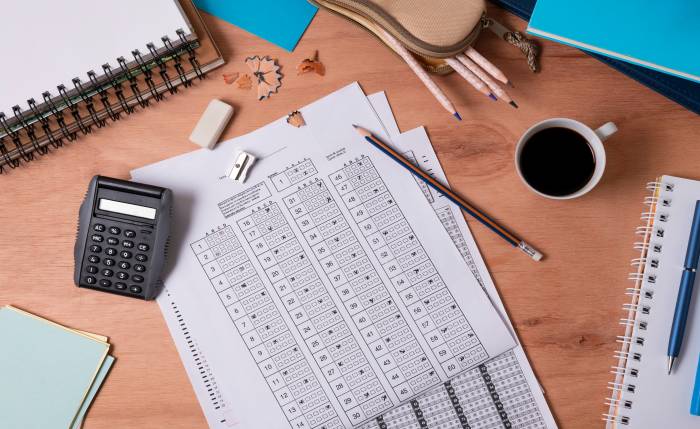Wondering how to calculate cgpa? Get our simple guide! Figure out your school score easily. Avoid common math mistakes. Check it out now!
1. What CGPA Means for Schoolwork
Hey there! Want to know about CGPA? It’s super important for students. CGPA stands for Cumulative Grade Point Average. It shows how well you did in all your classes over time. It’s a simple way to see your school results. Knowing how to calculate CGPA helps you check your school progress. This score is a standard way schools check how students are doing. Many schools use CGPA to see a student’s effort and results.
CGPA gives a full look at your school time. It’s not just about one test grade. It looks at all your grades from different terms or years. This makes CGPA key for things you do later. Learning how to calculate CGPA is a good skill. It helps you know where you stand in school. A high CGPA can help you get into a better school or get a good job. It’s a frequent method to compare how kids performed.
Lots of schools use CGPA for different reasons. It can help you get money for school (scholarships). It may also help you get into more difficult classes. So, knowing how to calculate CGPA is more than just grades. It’s about knowing your school place. It shows what you can do later. A good CGPA might be needed to finish school with honors. It’s a score known around the school world.
Also, knowing how to calculate CGPA is a skill for setting educational goals. If you know how to figure it out, you can see what grades you need next. You can plan your studies to get a certain CGPA. This way of planning is very helpful. It turns CGPA into a tool to help you study better. Taking time to learn how to calculate CGPA is a good idea for school.
2. How to Figure Out Your CGPA
To know how to calculate CGPA, you need to learn its parts. The math uses your grades and class credits. Each letter grade (like A or B) gets a number. This is a grade point. Class credits show how much a class counts toward your degree. These parts build the CGPA score.
Here is a simple look at the parts you need to know to calculate CGPA:
| Part | What it is | Example (Grade Scale 4.0) |
| Grade Point | A number for your letter grade. | A = 4.0, B = 3.0, and C = 2.0 |
| Credit Hours | How much a class counts (based on time). | 3 credits, 1 credit |
| Points for Class | Grade Point times Credit Hours for one class. | 4.0 (Grade A) multiplied by 3 (credits) is 12.0. |
| Total Class Points | Add up the class points from each class. | All class points added up. |
| Total Credits | Add up credit hours for all classes. | All class credits added up. |
When you know how to calculate CGPA, you use these parts in a simple math step. You take the quantity of your grades (grade points). Multiply it by how many credits the class is. This gives you points for that class. Do this for all your classes. Then, add up all these class points. This sum represents your total points earned.
The final step to calculating CGPA is to divide. Take your total class points. Divide it by the total credits for all classes. This number is your CGPA score. This clear way helps you figure out your CGPA score. Knowing these parts is key to doing it right.
3. Steps to Calculate CGPA
Let’s go through the steps on how to calculate CGPA. We will use a simple case to make it clear. First, get your school report. It has your classes, credits, and grades. This paper has all the facts you need to start. Having your report ready is step one.
Then, for each class, get your grade number. Your school has a grading system for this. For instance, ‘A’ is 4.0, ‘B’ is 3.0, and so on on a scale of 1 to 4, where 4 is the best.Use your school’s exact scale. This is very important for how to calculate CGPA correctly. Using the wrong scale gives the wrong answer.
Now, figure out the points for each class. Determine the grade point value of your grade. Multiply it by the number of credit hours in the class. For instance, your total points would be 3.0 * 3 = 9.0 if you obtained a “B” (3.0 points) in a three-credit course. Repeat for each class you took.
The next part for how to calculate CGPA is adding things up. Add up the points earned in each class. This is your total points at this moment. Also, add up the total credit hours for all those classes. These two sums are the main numbers you need.
Finally, to get your CGPA, divide your total points by your total credits. The number you get is your CGPA score. It shows your average score for those classes. These steps show a sure way how to calculate CGPA correctly each time.
4. What Grade Point Scales Mean for CGPA
Schools use different ways to turn grades into numbers. These number scales change how you calculate CGPA. A common scale uses numbers up to 4.0. Here, an ‘A+’ might be 10, ‘A’ is 9, and the numbers go down. You must know your school’s exact scale before you start.
The grade point scale makes a big difference in your CGPA math. A higher number for a grade suggests it improves your CGPA more. So, knowing the scale is a big part of knowing how to calculate CGPA the right way. Always look at your school’s official guide for the right scale numbers.
Sometimes, scales have small changes. These values are slightly different than A or B. On a 4.0 scale, an A may be 3.7. These small changes matter for your final CGPA. Pay attention to them when you learn how to calculate CGPA.
5. Credits and How They Help Calculate CGPA
Credit hours are a basic part of how to calculate CGPA. They show how much each class is worth in your school plan. Classes with more credits are bigger parts of your school load. So, they change your CGPA more than classes with fewer credits. This is because credits give weight to each class. This weight makes sure your CGPA shows how much effort each class required.
Think about two classes. If you obtain the same mark in both, the 3-credit class has a greater impact on your CGPA. It adds more points to your total. This shows why knowing credit hours is key for figuring out your CGPA the right way. It’s not just your grade, but how big the class was.
Here’s a simple chart showing how credits change the math for how to calculate CGPA:
| Class | Credits | Grade | Grade Point (Scale 4.0) | Points for Class (Credits * Point) |
| Math 1 | 3 | A | 4.0 | 3 * 4.0 = 12.0 |
| Science Lab | 1 | B+ | 3.3 | 1 * 3.3 = 3.3 |
| History Class | 3 | A- | 3.7 | 3 * 3.7 = 11.1 |
| Reading Class | 3 | B | 3.0 | 3 * 3.0 = 9.0 |
| Term Totals | 10 | 35.4 |
In this chart, to calculate CGPA for this school term, you add up the total points (12.0 + 3.3 + 11.1 + 9.0 = 35.4). Then divide by the total credit.(3 + 1 + 3 + 3 = 10). The CGPA for this term is 35.4 / 10 = 3.54. This chart makes it clear that credits are important.
6. Getting CGPA for Just One School Term
Finding your CGPA for only one school term is called getting your SGPA. That means Semester Grade Point Average. This math is like the full CGPA math, but only for the classes you took that term. Knowing your SGPA helps you see how you did term by term. It shows if your scores are going up or down. SGPA is the initial step towards your final CGPA.
To learn how to calculate CGPA for one term, list all your classes from that time. For each class, write down its credits and the grade you got. This information appears on your school report for that term. Getting this data is step one for the term’s CGPA.
Next, convert your grade for each class into a number. Use your school’s grading scale. After you get the number, multiply it by the course credit hours. This gives you the points you earned for that class in that term.
After you have points for every class that term, add them all up. This total is your points for the whole term. Additionally, add the total credit hours for all classes that quarter. These two sums are key to your SGPA number.
Finally, to get your SGPA (the CGPA for that term), divide the total points for the term by the total credits. The number you get is your SGPA. Learning how to calculate CGPA for one term first helps you understand the full CGPA math better.
7. Calculating Total CGPA Over Many Terms
Figuring out your total CGPA over many terms means adding up results from all your terms in school. This is the “cumulative” part of CGPA. It shows your average score for all the classes you took at the school. To do this right, you need the results from every term you finished. You usually find this on your full school report.
The best way to calculate CGPA over many terms is to use your term scores. For each term you finished, you should know your total points earned and your total credit hours. These are the key numbers from each term that you need for the total score. If you don’t have your SGPA totals, go back and figure them out for each term first.
Once you’ve calculated the total points and credits for each term, the following step is simple addition. This high amount represents all the points you earned while at school. This big total is all the credits you took.
The very last step to find your total CGPA is one more division. Take the total of points (all terms added up). The number that you receive represents your cumulative grade point average. This number shows how you did on average for your whole time at the school. Knowing how to calculate CGPA for your whole degree is very useful.
8. How to Calculate CGPA with Different Score Types
Different schools around the world score grades in various ways. This changes the first step of how to calculate CGPA. The fundamental math remains the same (dividing total points by total credits). But turning your grades into numbers (grade points) is different for each system. You must know the exact scoring system your school uses before you start the math. Using the wrong numbers for your grades means your CGPA will be wrong.
Some schools use letter grades (like A, B, and C). They have a number for each letter grade. As we said, this might be a scale-up to 4.0 or 10.0. Your school’s book or website will show the official list. It gives you an exact figure for each conceivable grade. Always use this list when you know how to calculate CGPA to be sure your numbers are right.
Other systems use percentages for grades. You get a percentage score for each class. Then, the school has a rule to change these percentages into grade points. This rule might match certain percentages to certain grade points. Or it might use a math step to change the percent to a grade point number. Knowing this percent-to-point rule is a needed step when you learn how to calculate CGPA in this system.
Also, some grades might not count for CGPA. Grades like Pass/Fail or Credit/No Credit often don’t add points to your CGPA. But the class credits might still count toward finishing your degree. Ask your school how they handle these grades. Make sure you only use the right classes in your math when you learn how to calculate CGPA. Ask the school if you are not sure about any grade or class type.
9. Turning CGPA to Percent and Back
Sometimes, you need your CGPA as a percent. Alternatively, you should convert a percentage into a CGPA. This often happens when you apply to a new school or a job. They might ask for your score in percent instead of CGPA. The method for changing it varies depending on the school and scoring scale. You need the right rule for the change after you learn how to calculate CGPA.
A common rule, especially for a CGPA scale of 10.0, is to multiply your CGPA by 9.5. This gives you a percentage score. For example, if your CGPA is 8.0, you might say your percent is 8.0 * 9.5 = 76%. But remember, this rule is not used everywhere! Some schools have their own rules. Always check with the place asking for the score for their exact way to change CGPA to a percentage. Using a different rule for how to calculate CGPA can show the wrong score.
Turning a percent back to CGPA also needs a rule. It is usually the inverse of the first rule. If the rule was Percent = CGPA * X, then the rule back is CGPA = Percent / X. So, if you have 85.5% and the rule is times 9.5, your CGPA is 85.5 / 9.5 = 9.0. These changes are needed to share your school score in different ways. They build on knowing how to calculate CGPA.
It’s best to ask the school or the place that needs the score for their rule. Some might use a different number than 9.5. Some might have a chart where a CGPA range matches a percent range. Using their rule is the only way to be sure your score is shown correctly. Learning how to calculate CGPA is step one; knowing how to change it is step two.
10. Simple Mistakes When You Learn How to Calculate CGPA
When you know how to calculate CGPA, it’s easy to mess up tiny things. Small errors can change your final score a lot. Knowing about these common errors helps you get it right. One big mistake is using the wrong number scale for your grades. Make sure you use the exact number for each letter grade from your school’s list. Using the wrong numbers makes all your math wrong.
Another common slip-up when you know how to calculate CGPA is making math errors. Adding up your points or credits wrong is easy to do. These sums are used in the final step, so mistakes here mean a wrong CGPA. Use a calculator! Make sure you’re adding a second time. Be careful with all of the numbers!
For the full CGPA over many terms, a mistake can be missing a term or a class. Your overall CGPA requires the results from all classes that count. Forgetting a term’s grades or one class’s credits gives you a wrong overall score. Check that you have all your school reports when you know how to calculate CGPA for everything.
Also, sometimes classes don’t count for CGPA (like Pass/Fail). Adding these in by mistake or not adding classes that do count will mess up your score. Check your school’s rules about which classes are used for the CGPA number. Ask the school office if you’re not sure which classes to include when you calculate CGPA.
11. Tools to Help You How to Calculate CGPA
To make it easier and avoid errors when you know how to calculate CGPA, there are many tools. Some websites and programs will do the arithmetic for you. These tools are fast and help stop human mistakes. Simply enter in your grades and credits for each class. Then the tool gives you your CGPA. It’s a quick way to check your score.
Many education websites have free CGPA tools. When you use these, try to find one that lets you pick your school’s grade scale. Some tools can even show you how your score might change with different grades next term. Tools are handy, but it’s still good to know how to calculate CGPA yourself. That way, you can be confident the tool is correct.
The best tools for how to calculate CGPA are often from your school itself. Many schools have their own CGPA tool on their student website. These tools are made for your school’s exact rules. They are usually the most correct. If your school has a tool, use that one first for the best result. These resources are there to assist you.
You can also use simple computer programs like Excel or Google Sheets.Create a list with columns for classes, credits, grades, and points. You can use math rules in the program to figure out the points for each class and the totals. Doing it yourself on a sheet gives you full control over the math. It’s another way to calculate CGPA.
12. How to Make Your CGPA Better
Knowing how to calculate CGPA is great for improving your schoolwork. When you see how each grade affects your score, you know where to put more effort. You can find classes or terms where you didn’t do as well. This helps you make a plan to do better. Setting a goal for your CGPA can help you study hard.
To raise your CGPA, look at your old term scores (SGPA). See if any term was lower. Then, look at the classes you took that term. Try to figure out why they were hard (maybe the subject was tough, or you didn’t study enough). Finding the problem is the first step to fixing it. Knowing how to calculate CGPA helps point you to these areas.
Focus on studying well in all your classes. Study regularly, join class talks, ask questions, and get help if a class is hard. Classes with more credits change your CGPA more, so do your best in those! Every grade adds to your score when you how to calculate CGPA.
Don’t be afraid to ask your teachers or school helpers for help. They can give tips for tough classes. They can also help you understand your score and how to make it better. Talking to them is important for getting better. Checking your CGPA sometimes helps you see if your plan is working.
Conclusion
Therefore, knowing how to compute CGPA is a fundamental school ability. It helps you see how you’re performing and displays your overall score. It’s key for things like more school or jobs. You just need your grades, credits, and your school’s scale. Then follow the steps. By doing it right, avoiding mistakes, and using tools, you can find your CGPA. Knowing how to calculate CGPA helps you set goals for school. It helps you find ways to do better. Checking your score helps you study hard. It gives you a clear look at your school path.
FAQs.
Q: Can you show me how to calculate cgpa easily?
- A: Yes, take your points for classes. Divide by credits for classes. That’s how to calculate cgpa. It is simple math.
Q: What steps do I use to calculate cgpa?
- A: Multiply grade points by credits for each class. Add them up. Divide total points by total credits. This is how to calculate cgpa.
Q: Why do credits matter in how to calculate cgpa?
- A: Classes with more credits are worth more. They give more points. This makes a bigger change to how to calculate cgpa score.
Q: Is how to calculate CGPA for one term different?
- A: Yes, that is SGPA. You use the same math. But only for one term’s classes. It is the first step for how to calculate cgpa total.
Q: How to calculate CGPA over many terms?
- A: Add points from all terms. Add credits from all terms. Divide total points by total credits. That is how to calculate cgpa for all school times.
Q: Can I convert my CGPA to a percentage score?
- A: Yes, you often raise your CGPA by 9.5. But check your school’s rules. They show how to calculate CGPA as a percent.
Q: What common mistakes to avoid when calculating CGPA?
- A: Use the right grade numbers. Check your math adding! Use all the needed classes when you calculate.
Q: Are there simple tools to help how to calculate cgpa?
- A: Yes, websites have free tools. Your school might too. They help you quickly figure out how to calculate cgpa number.
Q: How does understanding how to compute CGPA benefit me?
- A: You see your score. You can make goals. You know which classes need more work. It helps you study smart.
Q: Do all schools use the same numbers How to calculate CGPA?
- A: No, grade scales are not the same. A 4.0 scale is one way. A 10.0 scale is another. Check your school’s scale rules.
Disclaimer
This blog post is just sharing simple ideas on how to calculate CGPA. The exact rules and numbers can be very different at each school. The examples and math shown here are just to help you learn. They might not be exactly right for your school. We tried to give good info, but this post is not an official guide. Always use your school’s official book, website, or office to find out how to calculate CGPA for your scores. Use their exact rules. The person who wrote this is not responsible if you make mistakes using this info.







Leave a Reply